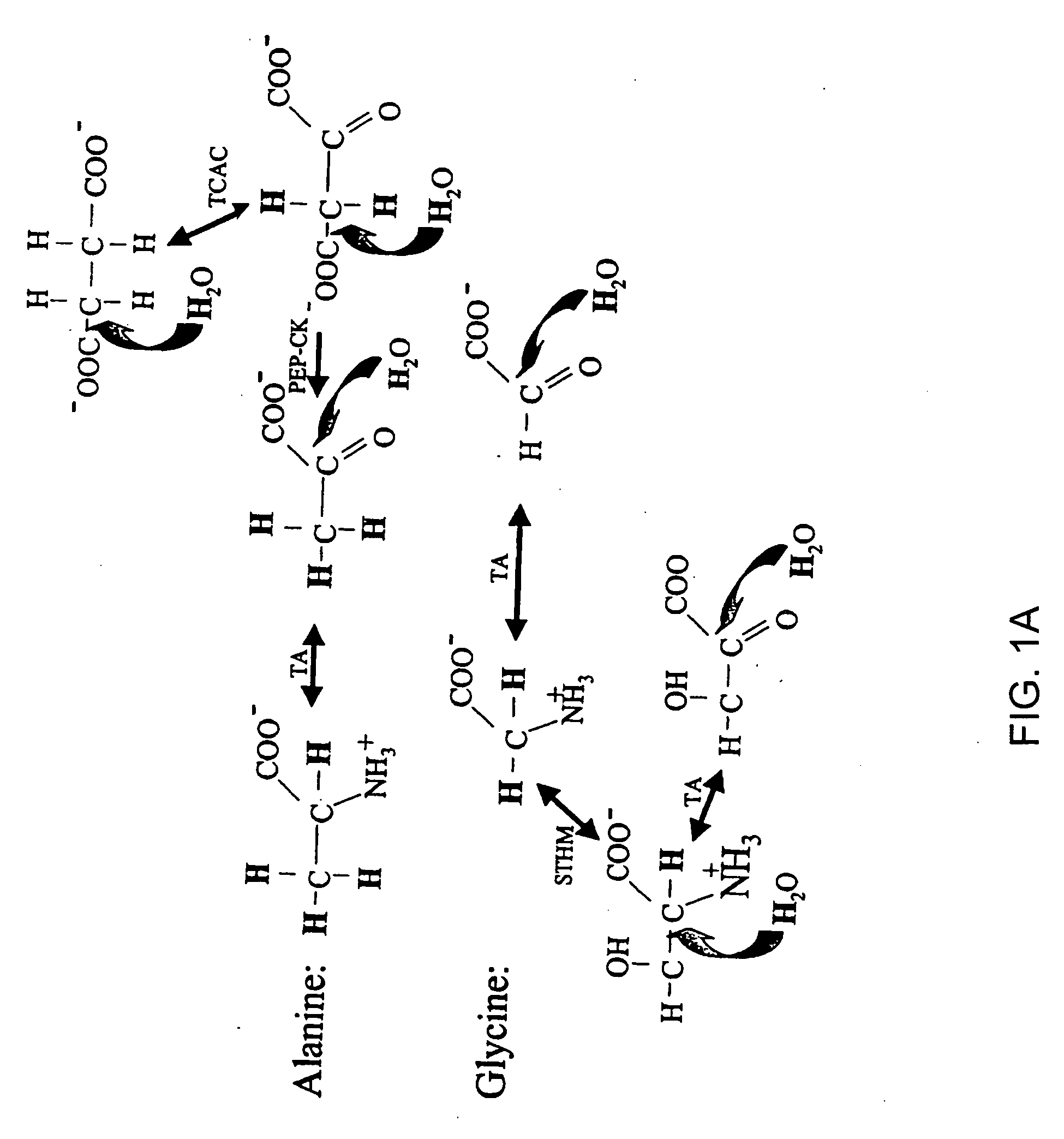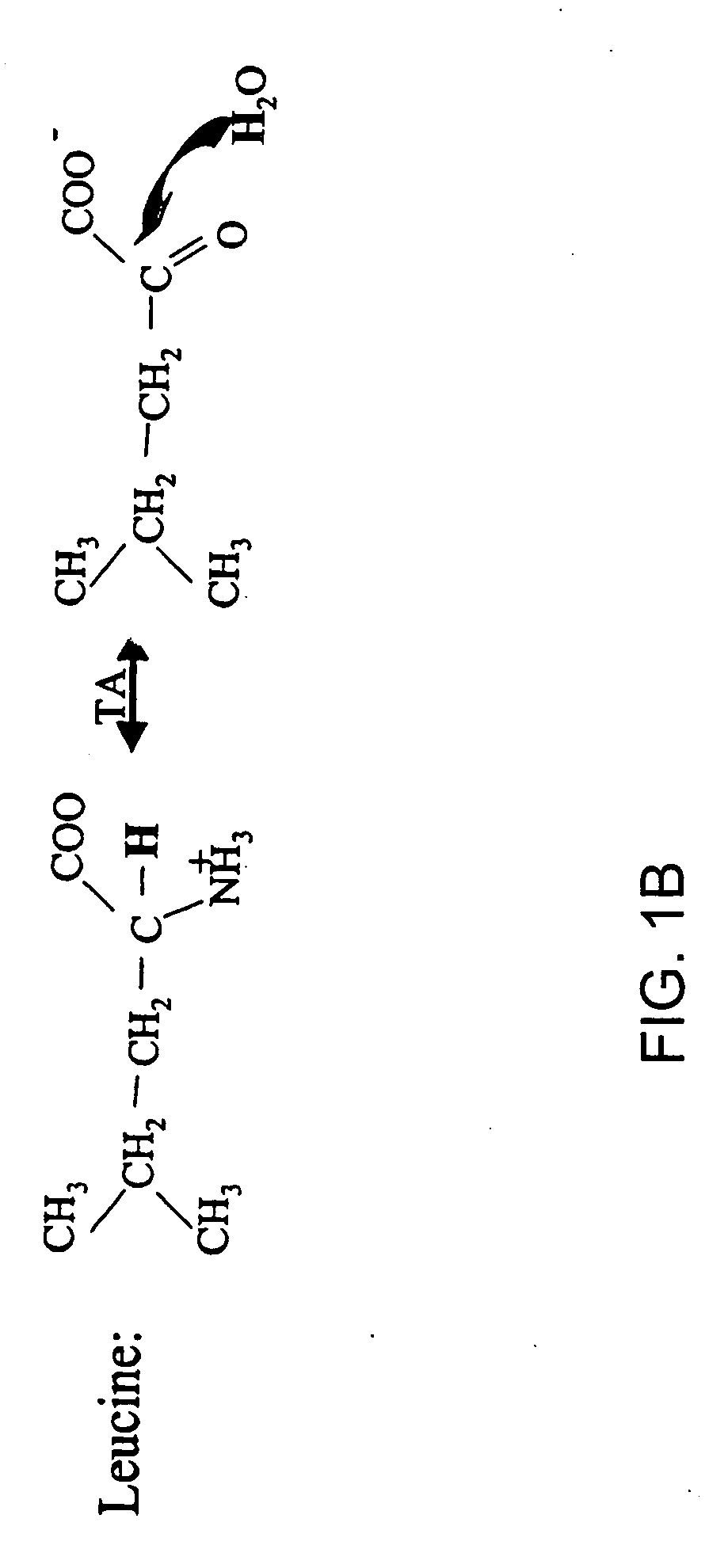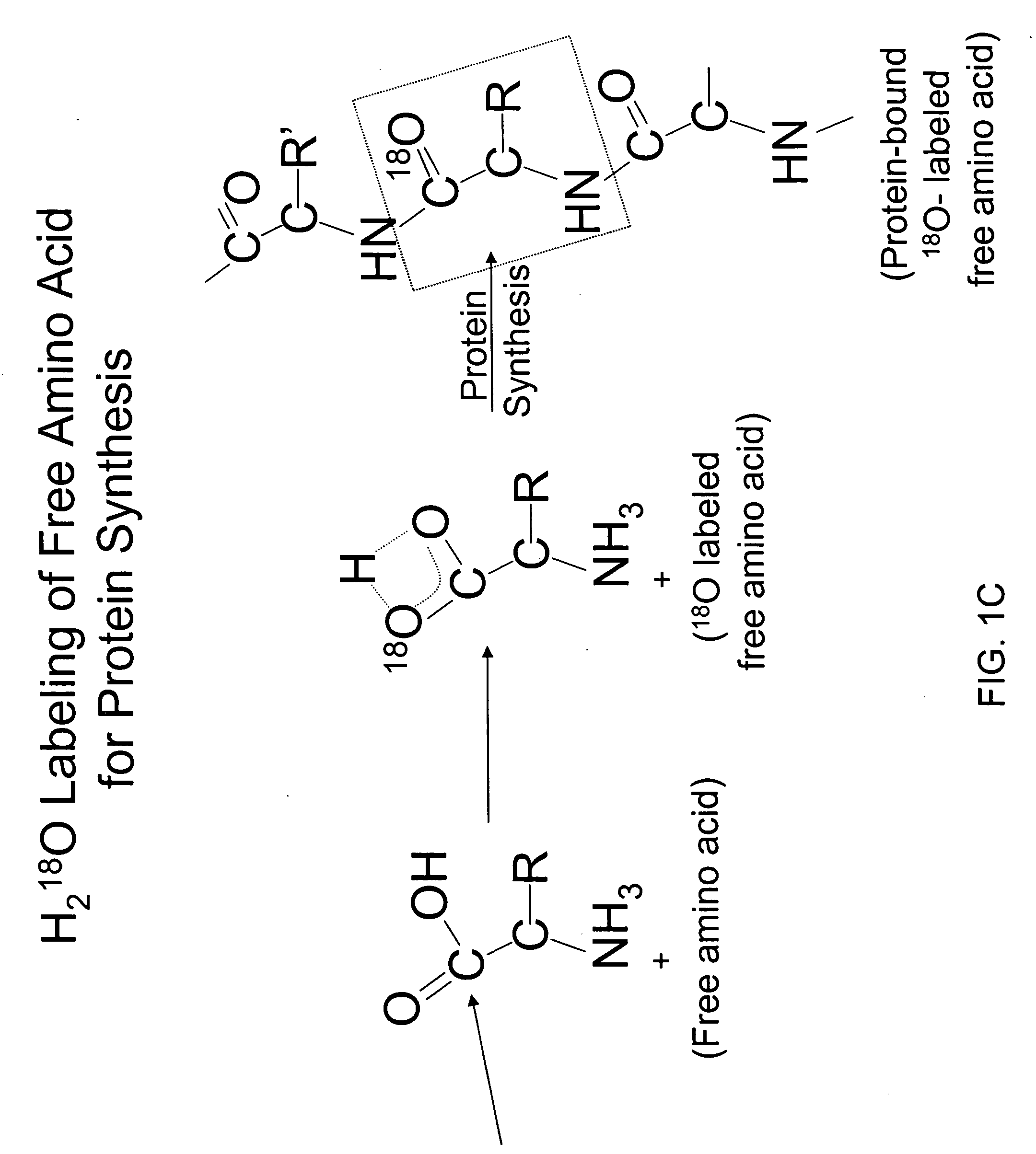Methods for comparing relative flux rates of two or more biological molecules in vivo through a single protocol
a technology of biological molecules and flux rates, applied in the field of methods for comparing relative flux rates of two or more biological molecules in vivo through a single protocol, can solve the problems of no commercially available, high-throughput screening tools available for phenotypic characterization or toxicity assessment, and technical limitations that have held back the development of high-throughput universal screening procedures
- Summary
- Abstract
- Description
- Claims
- Application Information
AI Technical Summary
Benefits of technology
Problems solved by technology
Method used
Image
Examples
example 1
Ratio of DNA: Protein Synthesis in Growing Tissues
The ratio of 2H-incorporation from 2H2O into DNA: protein in muscle, liver or other tissues reveals whether tissue growth is due to hyperplasia (addition of new cells) or hypertrophy (growth in size of each cell, without addition of new cells). This distinction is key to evaluating growth factors, genes or other interventions designed to alter the mass of any tissue. DNA:protein synthesis rates are measured concurrently by administering labeled water and detecting the incorporation of the isotope label in the DNA and proteins.
example 2
Ratio of DNA: Protein Synthesis in Tumor Cells or Microorganisms During Chemotherapy
The ratio of DNA: protein kinetics in bacteria during antibiotic chemotherapy reveals whether the antibiotic agent is working in a bactericidal manner (killing cells) or in a bacteriostatic manner (preventing cells from growing but not killing them). Similarly, ratios of DNA: protein kinetics in a tumor during chemotherapy reveals if cell death has been induced or growth has been halted (tumoricidal vs. tumoristatic effects). DNA: protein synthesis rates are measured concurrently by administering labeled water and detecting the incorporation of the isotope label in the DNA and proteins.
example 3
Ratio of Mitochondrial DNA to Cellular Protein or Genomic DNA Synthesis Rates
The occurrence of mitochondrial biogenesis independent of somatic growth of tissues can be very important, for example, in the training response of muscle to aerobic exercise. The ratio of mtDNA synthesis to cellular protein or genomic DNA synthesis reveals growth-independent mitochondrial biogenesis and turnover, and represents a biomarker of aerobic fitness. Synthesis rates of mtDNA and cellular proteins or genomic DNA are measured concurrently by administering labeled water and detecting the incorporation of the isotope label in the mtDNA and cellular proteins or genomic DNA (for example, see FIGS. 1 and 2).
Sprague-Dawley rats (wt 210-350 g) from Simonsen were housed in wire cages, 3 per cage with a 12 hour light / dark cycle. All procedures were approved by the UC Berkeley Office of Laboratory Animal Care. Purina rat chow was provided ad libitum. There were 2 groups of rats, a young male growing group...
PUM
| Property | Measurement | Unit |
|---|---|---|
| Molar concentration | aaaaa | aaaaa |
| mass isotopomer distribution analysis | aaaaa | aaaaa |
| liquid scintillation counting | aaaaa | aaaaa |
Abstract
Description
Claims
Application Information
 Login to View More
Login to View More - R&D
- Intellectual Property
- Life Sciences
- Materials
- Tech Scout
- Unparalleled Data Quality
- Higher Quality Content
- 60% Fewer Hallucinations
Browse by: Latest US Patents, China's latest patents, Technical Efficacy Thesaurus, Application Domain, Technology Topic, Popular Technical Reports.
© 2025 PatSnap. All rights reserved.Legal|Privacy policy|Modern Slavery Act Transparency Statement|Sitemap|About US| Contact US: help@patsnap.com



